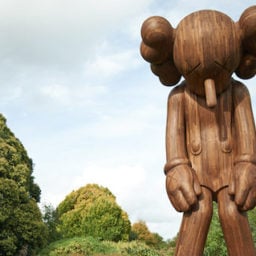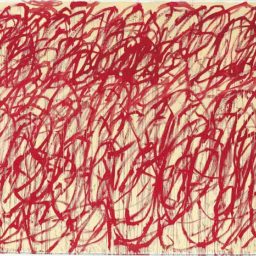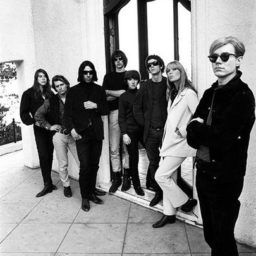

It’s hard to believe, but the year is almost over. Another 12 months have whizzed past us, with their usual load of openings, exhibitions, biennales, and art fairs.
In this article we go down memory lane to remember some of the best exhibitions that took place in Europe in 2015, in no particular order.
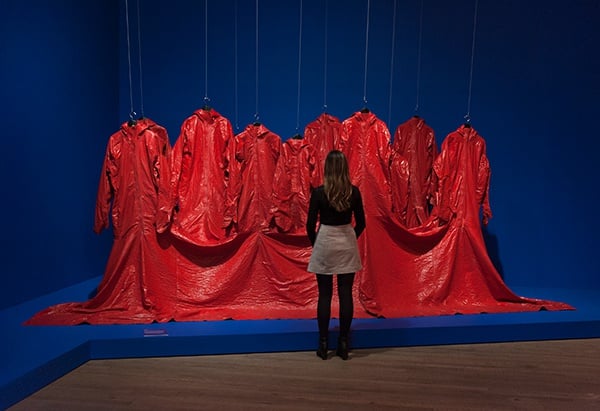
Installation view of “The World Goes Pop” at Tate Modern.
Photo: Courtesy Tate Modern.
1. “The World Goes Pop” at Tate Modern, London
When Tate Modern announced that one of its biggest exhibitions of the year, planned to coincide with Frieze Week, would be devoted to Pop Art, many art lovers rolled their eyes. But lo and behold, the then-curator Jessica Morgan (now director of Dia Art Foundation) crafted an utter triumph of an exhibition, perhaps one of the best group shows to grace the walls of the popular museum in quite some time.
“The World Goes Pop” (on view until January 24, so hurry up) features over 64 artists from 28 countries, including Poland, Japan, Spain, France, and Brazil, most of them working on the fringes of the established Pop Art capitals—London and New York. Refreshingly, Morgan’s offering featured a more than generous selection of women artists, including Kiki Kogelnik, Jana Želibská, Anna Maria Maiolino, Evelyne Axell, Judy Chicago, and Martha Rosler. I never knew Pop Art could be this exciting.
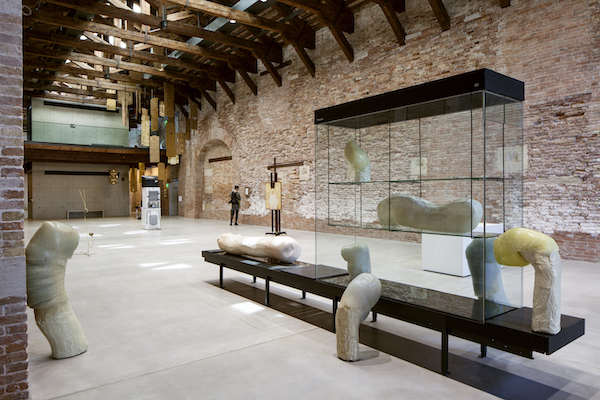
Installation view of the “Slip of the Tongue” exhibition in Venice.
Photo: Fulvio Orsenigo via Palazzo Grassi.
2. Danh Vo (curator), “Slip of the Tongue” at Punta della Dogana, Venice
Unlike Massimiliano Gioni’s “Encyclopedic Palace” two years ago, Okwui Enwezor’s 2015 Venice Biennale, “All The World’s Futures,” won’t be remembered too kindly. Bleak, self-righteous, and, worst of all, unimaginative, this edition disappointed many visitors to the wonderful Italian city. But there were plenty of off-site exhibitions that made the trip worthwhile (and who doesn’t love being in Venice anyway?).
The best among them was Danh Vo’s curated exhibition at the Pinault Foundation. “Slip of the Tongue” revealed (to me, at least) the most interesting guise of the successful artist: that of the curator. Vo managed to offer a brilliant and carefully staged selection of works by artists including Alina Szapocznikow, Paul Thek, Jos De Gruyter & Harald Thys, Tetsumi Kudo, Lee Lozano, Leonor Antunes, and Constantin Brancusi, among many highlights (some works borrowed from the Pinault collection, some not).
The results were so beguiling that one even managed to overlook Vo’s rather grandiose gesture of including his own works as part of the selection, placing them in dialogue with small Medieval and Renaissance masterpieces. Talk about inscribing yourself into art history. Brilliant exhibition nevertheless.
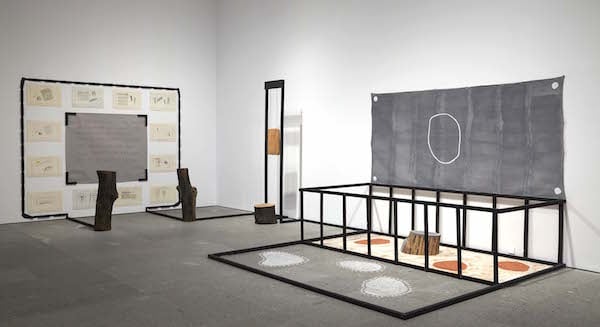
Ree Morton’s Sister Perpetuas Lie (1973).
Photo: Courtesy Museo Reina Sofía.
3. Ree Morton, “Be a Place, Place an Image, Imagine a Poem” at Museo Reina Sofia, Madrid
Madrid’s Museo Reina Sofía never disappoints. This summer it staged a wonderful retrospective of the American artist Ree Morton, her first all-encompassing exhibition since her 2008 show at Vienna’s now defunct Generali Foundation and her 1980 retrospective (her first) at New York’s New Museum, staged three years after her death.
Morton’s brief but influential career—she started making art in her thirties and died prematurely in a car accident at the age of 41—has left us a body of drawings and sculptures created between 1968 and 1977 that look absolutely relevant today.
Morton’s most famous pieces—Sister Perpetua’s Lie, Souvenir Piece (both 1973), Each Concrete Man, and See-Saw (both 1974)—brought elements from nature into the gallery, like tree trunks and branches. Her use of small-scale items, as if taken from a children’s book about mythical creatures, created magical pieces that are playful but hermetic, enticing viewers with the promise of something fun and innocent, and then frustrating them with their refusal to reveal meaning.

Installation view of the “Savage Beauty” exhibition.
Photo: via ibitimes.co.uk
4. Alexander McQueen, “Savage Beauty” at the Victoria & Albert Museum, London
Exemplifying the much maligned concept of exhibition-as-spectacle was McQueen’s hotly-awaited retrospective at the V&A, which was delivered to the iconic fashion designer’s fellow Londoners four years after capturing the imagination of thousands of New Yorkers at the Met.
I visited the exhibition on its final weekend—with the museum opening 48 hours straight to accommodate demand—and I am glad I made the effort. For sure, the galleries were packed and, at worst, it felt a bit like being at the first day of the Harrods’ fashion sale, squeezing through hordes of people trying to see impossibly fancy clothes on mannequins. But, in some rooms, with a bit more space, one couldn’t but feel bowled over by the crazy talent of the troubled designer, and his yet-to-be-matched eye for scenography, masterfully combining garments, lights, props, and music to dramatic and soaring effect.
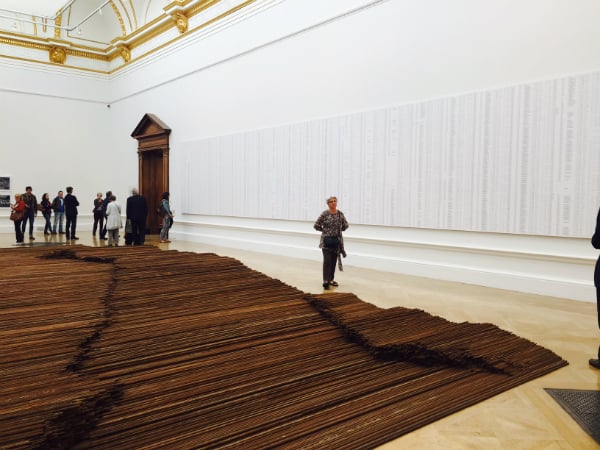
Installation view of Ai Weiwei’s Straight at London’s Royal Academy of Arts, 2015.
Photo: Lorena Muñoz-Alonso
5. Ai Weiwei at the Royal Academy of Arts, London
2015 will surely be remembered fondly by Ai. Throughout the year, Ai not only got his passport back after four years, hung out with Anish Kapoor in support of refugees, and won a (moral) battle against Lego, among many other feats and stunts, but also staged a phenomenal retrospective at London’s Royal Academy of Arts that reminded us that, besides being a wildly-talked about celebrity dissident, he is a fantastic artist, first and foremost.
The exhibition, which received a total of 372,813 visitors, with a daily average of 4,335, gathered works from Ai’s entire oeuvre, from his early days as making furniture-based ready-mades to his ambitious and highly political installations of recent years, including Straight (2008-2012) and S.A.C.R.E.D (2012).
All in all, Ai’s retrospective came out as a thoroughly enjoyable exhibition, which provided an emotional roller-coaster of sorts to viewers thanks to its nuanced mix of humorous and political pieces, and of formal experiments and conceptual works. At the end of the day, what more can you ask of a show?
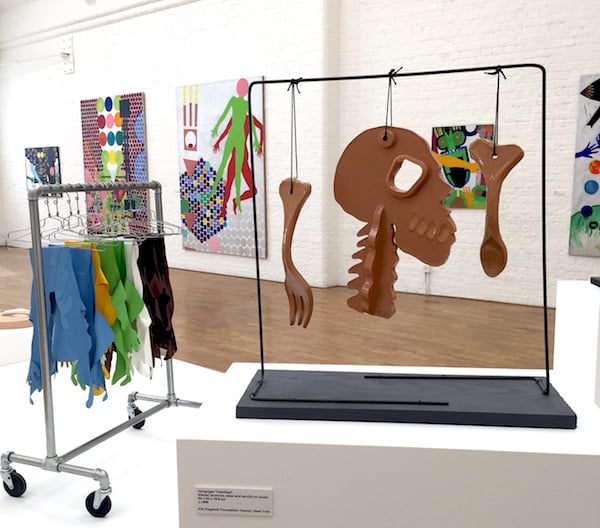
Installation view of Kiki Kogelnik’s “Fly to the Moon” exhibition at Modern Art Oxford.
Photo: via Lorena Muñoz-Alonso.
6. “Kiki Kogelnik, “Fly Me to the Moon” at Modern Art Oxford, Oxford
The resurgence of the art of Kiki Kogelnik on the international scene has been one of the most exciting developments of 2015. The wave seemed to have started back in 2013, when Berlin’s König Galerie‘s devoted its Frieze Masters presentation to the work of this (until now) under-appreciated Austrian artist.
Since then, the oeuvre of Kogelnik has steadily gained attention, collectors, and supporters. This year, her work was showcased in two galleries at Frieze London: König Galerie at the main section and New York’s Simone Subal in the younger section, Focus. Simultaneously, as if triggered by a sudden Kogelnik-mania of sorts, her oeuvre was being featured in two institutional shows in the UK: the group show “The World Goes Pop at Tate Modern” (see above) and a solo exhibition at Modern Art Oxford.
“Fly Me to the Moon” was a fair testimony of the phenomenal and vibrant work of this artist, who was born in Graz in 1935 and moved to New York as a young painter in 1961, striking up friendships with Pop artists such as Claes Oldenburg, Roy Lichtenstein, and Andy Warhol. Her color palette became bolder and brighter, and because she started incorporating elements from mass media and popular culture in her paintings and sculptures, she was inscribed into the Pop canon herself.
But Kogelnik’s work transcends Pop in many ways. Obsessed with new technologies and with the Cold War, Kogelnik explored the commodification of war and the human body and concepts such as post-human and post-gender long before they became fashionable. At first sight, her works are lively, funny, bright. Their meanings, however, are much darker and biting. Sci-fi dystopias back in her time, incomprehensible truths in ours.
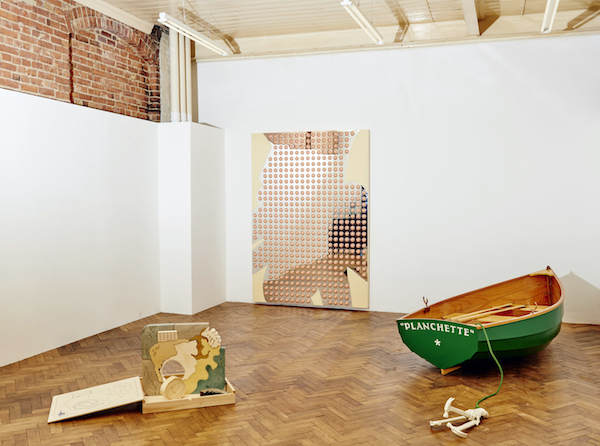
Installation view of Studio Leigh’s inaugural exhibition in London.
Photo: Courtesy Studio Leigh.
7. Inaugural exhibition at Studio Leigh, London
A few weeks before Frieze Week, just as London was awakening from its summer slumber, 26-year-old Tayah Leigh-Barrs opened her commercial art space Studio Leigh, bang in the middle of Shoreditch—an area in east London that back in the 1990s was run-down and heaving with young artists (including “maverick gentrifier” Tracey Emin) but that in the last ten years has out-priced most creative types, towards Hackney further east or to Peckham in the south.
Leigh-Barrs’s project is certainly brimming with chutzpah. The former art director of photographer and collector Mario Testino found a fantastic three-storey building in serious disrepair in Shoreditch, and managed to convince the owner to contribute to its refurbishment costs and to give her a “friendly price” for the rent of the large building in the exclusive area, next to a string of fancy restaurants and boutiques.
But the ambitions of the young dealer didn’t stop at real estate. Her artistic vision is also remarkably assertive for someone so young and with no previous dealing experience. For the inaugural show, she commissioned (and funded by herself, with the aid of private backing) the production of works from 27 young artists responding to the ideas of use-value and art for art’s sake.
The artist selection—which included names like Aaron Angell, Rhys Coren, Nicolas Deshayes, Mary Ramsden, Florence Peake, and Cècile B. Evans—was a perfect survey of the art that is being produced today by the young artists living in British capital. Meanwhile, the proposed theme resulted in an exciting and timely show exploring the overlapping of art and design, with the added bonus that most of the works indulged in a healthy dose of humor (see Angel’s Planchette, a boat-cum-tomb for a domestic cat; Richard Gasper’s Flower Toilet, a fully-functioning toilet installed at the back of the space; and Deshayes’s Warm Sculpture, a home radiator in shape of a bodily organ).
A very strong overture for a dealer and a space that we will be keeping a close eye on in 2016.
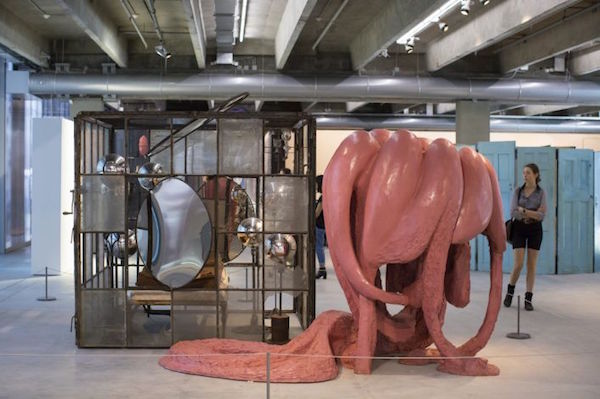
Louise Bourgeois, In and Out (1995). Collection The Easton Foundation.
Photo: © Garage Museum of Contemporary Art.
8. Louise Bourgeois, “Structures of Existence: The Cells” at Garage Museum of Contemporary Art, Moscow
After opening to much fanfare in June this year in a new Rem Koolhaas refunctioned building in Gorki Park, Moscow’s Garage Museum finally caught up with its own hype a couple of months later with a staging of a comprehensive exhibition of Louise Bourgeois’s Cells—the largest to date—which also coincided with the 6th Moscow Biennale in September.
Organized in close collaboration with Bourgeois’s longtime assistant, Jerry Gorovoy, the exhibition begins outside the museum where a towering bronze spider, Maman (1999), casts an ominous shadow on the building’s shiny facade. Once inside, the artist’s numerous Cells sprawled around the museum’s two levels counter the sculpture’s magnitude with the intensity of their details.
The assorted hand crafted objects, yarn, garments, and rusty bric-a-brac within them speak volumes not only about the artist’s own difficult family biography but also on the struggles of women in the turbulent 20th century. A particularly violent cell is an explicit revenge fantasy on the artist’s father. (By Hili Perlson)
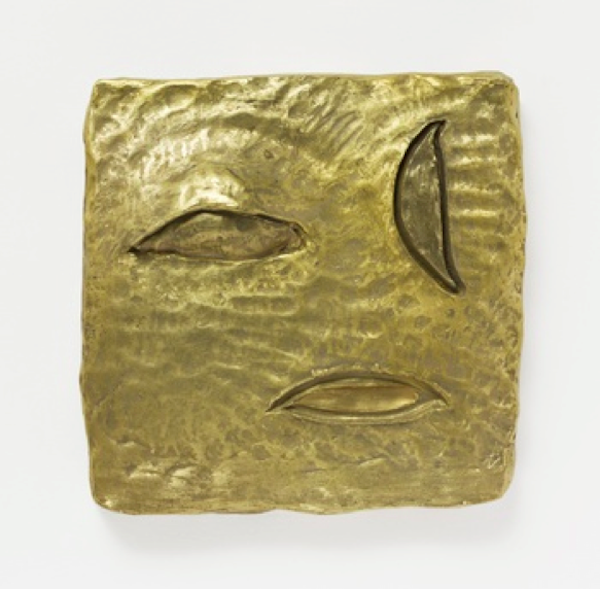
Erika Verzutti, Star Without Makeup (2015)
Photo: © The artist Courtesy of Alison Jacques Gallery.
9. Erika Verzutti, “Two Eyes Two Mouths” at Alison Jacques Gallery, London
Among the slew of museum and gallery exhibitions in town competing for attention with Frieze London this year, Verzutti’s first solo exhibition at Alison Jacques Gallery was (for me) the strongest contender for the first prize.
Her collection of small but attention-grabbing wall-based works in bronze, clay, and paint occupy a formal space between sculpture and painting, and were an absolute joy to experience. Works like Van Gogh with Eggs, Two Eyes Two Mouths, Bikini, or The Dress (all 2015) were textural delights, almost edible looking, that seemed to beg to be touched or licked (I had to restrain myself from putting my fingers in them).
There certainly is something about Verzutti that brings to mind the work of legendary 20th century female sculptors Eva Hesse and Louise Bourgeois: the organic forms and colors, the abject touch, the imprint of the artist hand. But the Brazilian artist actualizes that well-trodden path with the use of humor, and by bringing her knowledge and awareness of art history to the fore, rather than trying to sweep it under the carpet.
Crucially, her works exude pleasure. The pleasure of being an artist and working directly with materials, of engaging with form. And that—in the rarified, fabricator-led, mostly outsourced artistic arena of 2015—is certainly something to be cherished.

Tino Sehgal and performers in front of the Martin-Gropius-Bau Berlin, June 2015
Photo: © Mathias Völzke
10. Tino Sehgal, Martin Gropius Bau, Berlin
The first major exhibition dedicated to Tino Sehgal in his hometown, this show brought together five so-called “situations” by the elusive artist.
The works weren’t new, and some visitors did probably recognized situations previously “lived” at the 4th Berlin Biennale (Kiss, 2002) or documenta 13 (This Variation, 2012), with the most recent one being the enduringly haunting Anne Lee (2011), which was also staged at Philippe Parreno’s exhibition at the Park Avenue Armory in New York this year.
What was new about this show, however, was the space given for some of the situations to spill into each other, with much cross-over taking place in the museum’s grand atrium. The “interpreters”—Sehgal’s incredibly intuitive performers—slipped in and out of character and rooms, adding to this near-retropective show its perhaps most compelling element: viewer engagement. (By Hili Perlson)
Follow Artnet News on Facebook:
Want to stay ahead of the art world? Subscribe to our newsletter to get the breaking news, eye-opening interviews, and incisive critical takes that drive the conversation forward.

